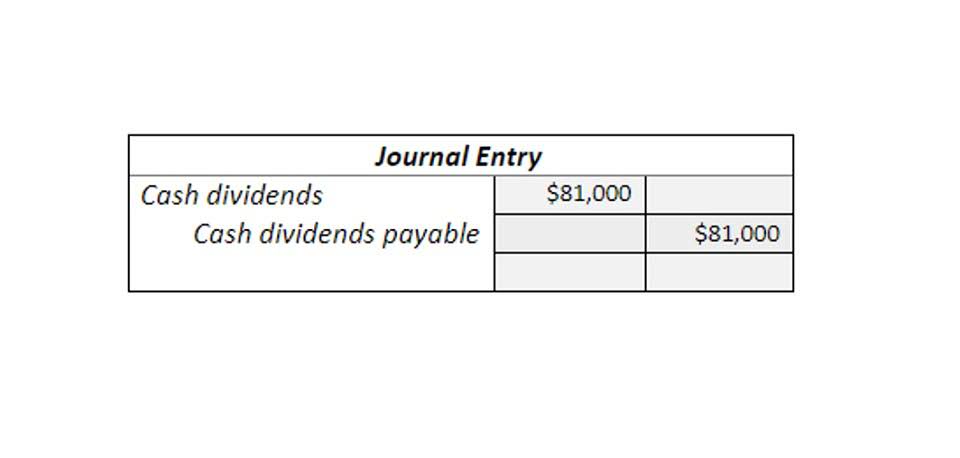Content

The update discusses matters critical to oil and gas entities, including updates to SEC, FASB, and tax guidance with a specialized focus on the oil and gas industry. COPAS offers high-quality oil and gas accounting courses online that occur throughout the year. With nine courses running as a webinar series (with several of them running twice) you’re sure to find something that piques your interest. If you’re an accountant that already works with clients in the oil and gas field, COPAS courses keep your knowledge up-to-date while providing CPE credits to maintain your license. By choosing to earn CPE in the oil and gas industry with COPAS, you have the opportunity to learn the most up-to-date information for accountants in the oil and gas industry while keeping the state boards of accountancy off your back. Oil and gas companies spend a lot of money exploring new untapped reservoirs without any guarantee that they will find anything.
The reason that two different methods exist for recording oil and gas exploration and development expenses is that people are divided on which method they believe best achieves transparency of a company’s earnings and cash flows. To qualify for MLP status, a partnership must generate at least 90% of its income from what the Internal Revenue Service deems “qualifying” sources. The vast majority of MLPs are pipeline businesses, which generally earn stable income from the transport of oil, gasoline or natural gas. More specifically, energy MLPs are defined as those that own energy infrastructure — including pipelines, storage, terminals, or processing plants for natural gas, gasoline or oil — in the United States.
Understanding Successful-Efforts and Full-Cost Accounting
These accounting methods differ in their treatment of specific operating expenses — namely, exploration costs related to carrying and retaining undeveloped properties, collecting and analyzing geophysical and seismic data, and drilling exploratory wells. Rather than considering EBITDA (earnings before interest, taxes, depreciation and amortization) as a primary pricing metric for E&P companies, analysts usually consider EBITDAX, which is a company’s EBITDA before exploration costs for successful efforts. For full-cost firms, exploration costs are embedded in depreciation and depletion, so EBITDAX equalizes both accounting types. Companies record exploration costs capitalized under either method on the balance sheet as part of their long-term assets. This is because, like the machinery used by a manufacturing company, oil and natural gas reserves are considered productive assets for an oil and gas company. Generally accepted accounting principles (GAAP) require that companies charge costs to acquire those assets against revenues as they use the assets.
- To qualify for MLP status, a partnership must generate at least 90% of its income from what the Internal Revenue Service deems “qualifying” sources.
- At the same time, capitalizing unsuccessful exploration costs rather than expensing them results in the company being more susceptible to large non-cash charges whenever the preceding factors result in an expected cash flow decline.
- Some choose to view this as the discovery being the true need, which means that all operational costs incurred during the discovery process should be counted – which is where the full cost method comes in.
- Deloitte refers to one or more of Deloitte Touche Tohmatsu Limited, a UK private company limited by guarantee („DTTL“), its network of member firms, and their related entities.
- Ultimately, the two organizations that regulate accounting and financial reporting, the Financial Accounting Standards Board (FASB) and the Securities and Exchange Commission (SEC), cannot always agree on which method is most appropriate.
- This is why it is incredibly important to work with a financial team that really understands the oil and gas industry in order to gain a full understanding of the business and its financial health – both short-term and long-term.
At the processing plant, various products (for example, natural gas liquids like ethane and butane) are separated from the oil and gas. Examples of large midstream companies include Enterprise Products Partners L.P., Kinder Morgan Inc., and TransCanada Corporation. This is because adding back the non-cash charge for DD&A effectively oil and gas accounting negates the relatively larger impact to net income under the FC accounting method. Due to the frequency of reserve acquisitions and divestitures among the publicly traded E&P companies, which could distort valuation indications, a forward- or current-year indication of reserves, production, and EBITDAX should be used.
Full Cost (FC) Method
With interactive courses, comprehensive resources, and real-world examples, we can provide an engaging and educational experience for all accountants that currently work in the oil and gas field. When taking oil and gas courses with COPAS, you can expect to gain the knowledge that you need to continue providing high-quality services to all of your clients. It will prove that you’re up-to-date with the latest technologies and strategies, thus giving your clients more confidence in your abilities. Figure 3 presents the variations in EBITDA valuation multiples for the different types of oilfield services companies. This annual publication provides an update on accounting, tax, and regulatory matters relevant to the oil and gas industry.

The effect of choosing one accounting method over another is apparent when periodic financial results involving the income and cash flow statement are compared. Each method highlights the individual costs, which fall into the categories of acquisition, exploration, development, and production, differently. However, such a comparison also points out the impact on periodic results caused by differing levels of capitalized assets under the two accounting methods. DD&A, production expenses, and exploration costs incurred from unsuccessful efforts to discover new reserves are recorded on the income statement. Initially, net income for both an SE and an FC company is impacted by the periodic charges for DD&A and production expenses, but net income for the SE company is further impacted by exploration costs that may have been incurred for that period. An MLP is a limited partnership that is publicly traded on a stock exchange qualifying under Section 7704 of the Internal Revenue Code.
Related Experience
If you’re currently outside of the oil and gas industry, then studying oil and gas CPE courses can be a valuable experience that opens new opportunities for you in the future. As an accountant, it’s beneficial to have a repertoire of skills and experience to help you find work. Our accounting CPE courses are the perfect way to help you gain new knowledge https://www.bookstime.com/articles/remote-bookkeeping in energy industries while also maintaining your license. The midstream sector starts at the gathering system, which collects oil and gas from the wellheads. Gathering systems range in size from small systems that process gas close to the wellhead, to large systems consisting of thousands of miles of pipes that collect from hundreds of wells.
- Each method will have its own way of demonstrating costs when it comes to cash flow, so it is crucial to understand the methods in depth in order to anticipate what financial statements will look like.
- Examples of global E&P companies include Exxon Mobil Corporation, Royal Dutch Shell plc, and BP plc.
- This approach stands in contrast to the successful efforts (SE) accounting method, which only capitalizes expenses related to fruitful extraction ventures.
- Course DescriptionOil and gas operations have some of the most unique accounting issues found in any industry.
- Oil and gas companies spend a lot of money exploring new untapped reservoirs without any guarantee that they will find anything.
- These budget reductions directly impact clients’ demand for an oilfield services company’s products.
- In other words, these two governing bodies have yet to find the ideological common ground needed to establish a single accounting approach.
